|
Saturday, June 21, 2007
Progress Notes
Last week we enjoyed meeting a lot of people who came to visit us at the Ice Cream Social. I hosted the general information tent on the museum grounds and was placed in very good spot to talk to guests as they arrived. Ellis and Jackie Bray came early and set up the easel for Jackie so she could paint on site a landscape of an old cabin located near Brumley which belonged to her uncle Philo Burks (see photos 1 and 2). Ellis, who has written a book about his boyhood experiences in neighboring Maries County ("Growing Up in the Bend") has written a song celebrating the famous Tuscumbia steamboat, J.R. Wells (see attached doc. 3). Other artists on site were Phyllis Butler of Montreal who was painting a picture of the old Presbyterian Church in Tuscumbia (photos 4 and 5); Sandra Campbell of Osage Beach who was painting a picture of the old brick office building up the hill from the Presbyterian Church (see photos 6 and 7); and Mary Gainer, art teacher at Eldon, who was painting the old Lupardus cabin which is located on the grounds at the museum (see photos 8 and 9).
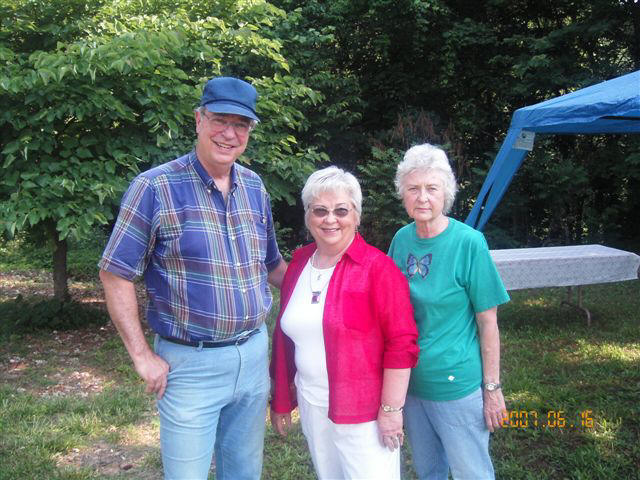 Ellis and Jackie Bray, Sharon Cogdill
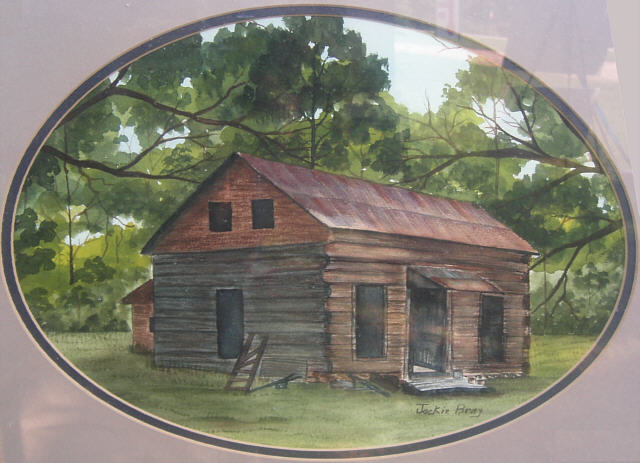 Philo Burk's Cabin
The Ballad of the J. R. Wells
Chorus:
Steamboat's a'comin! I bet it's the J. R. Wells.
There's a couple of bends between us, so I can't rightly tell, Let's go down to the woodyard to see if she stops by.
See the smoke and steam; hear that whistle scream. It's the J. R. Wells. Oh, my!
(instrumental interlude - repeat of last line)
Verse 1:
Out of oak and elm and a big fine boiler, they built the J. R. Wells; Right on the banks of the Osage River, below Tuscumbia's hill. They built her to be a workhorse, and on her they'd depend.
They built her to float on a foot 0' water, 'round the river's crookedest bend.
(Chorus, then interlude)
Verse 2:
With tiff and lead, and with grain and lumber, with venison, pork and furs,
They'd load up the Wells to steam down-river, through a hundred miles of curves, Down past the mouth of the Osage, [and] on to the Mighty Mo.
With salt and nails, with plunder and mail, she'd be back in a week or so.
(Chorus, then interlude)
From Warsaw to Linn Creek and Devil's Elbow, from Zebra to Shipley Shoal; From Bagnell on down to Osage City, the J. R. Wells would roll,
Headin' for the Big Muddy, the captain' d push his boat,
Sayin', "Open up the channel, boys, gotta keep the Wells afloat!"
(Chorus, then interlude)
Coda:
Steamboat's a'comin'! It's the J. R. Wells. Oh, my!
©E.M.Bray,2006
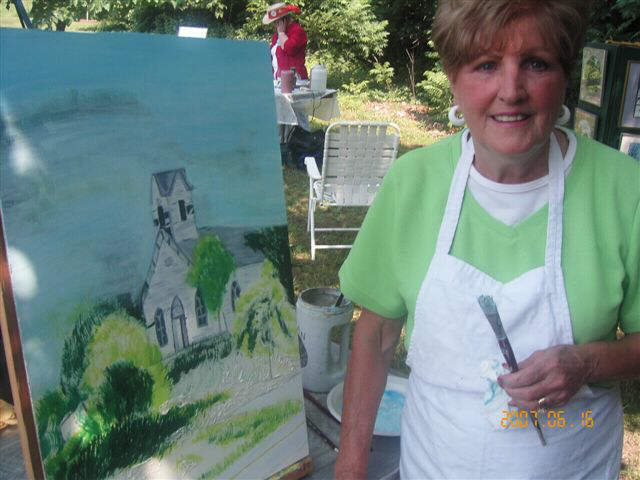 Phyllis Butler
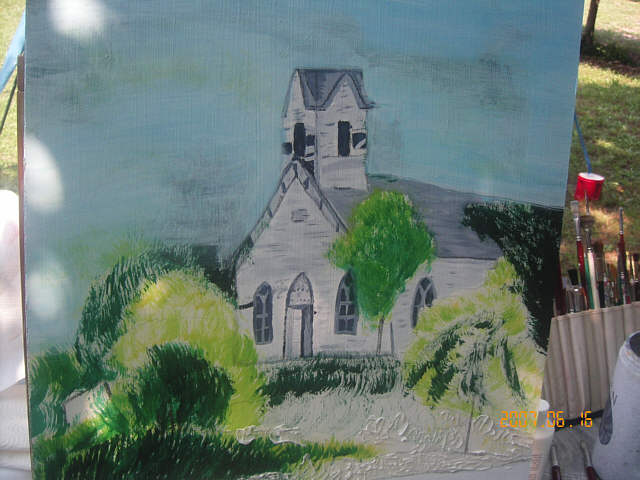 Presbyterian Church
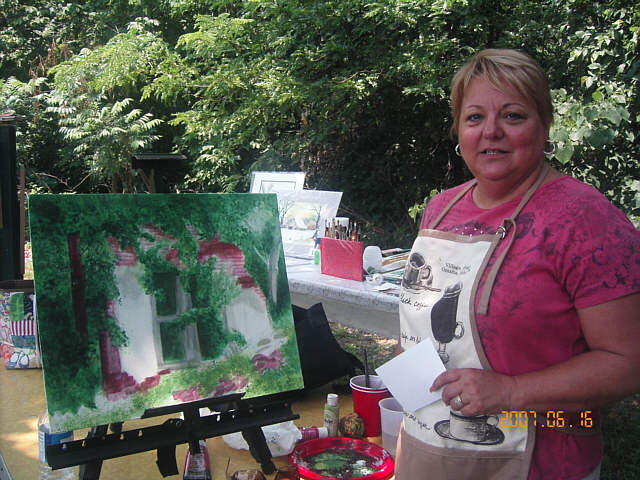 Sandra Campbell
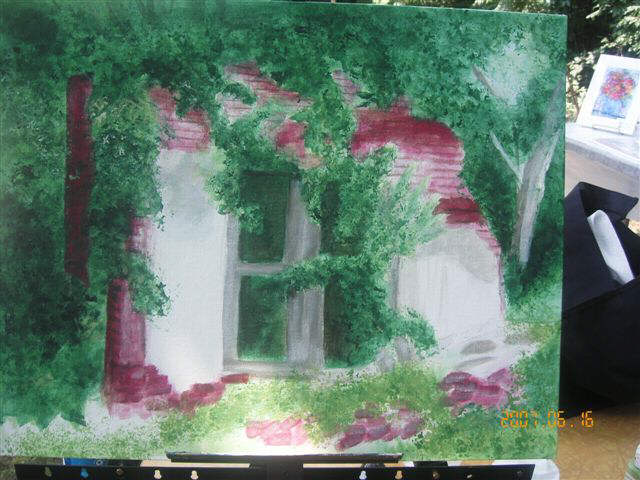 Ruins of Office Building
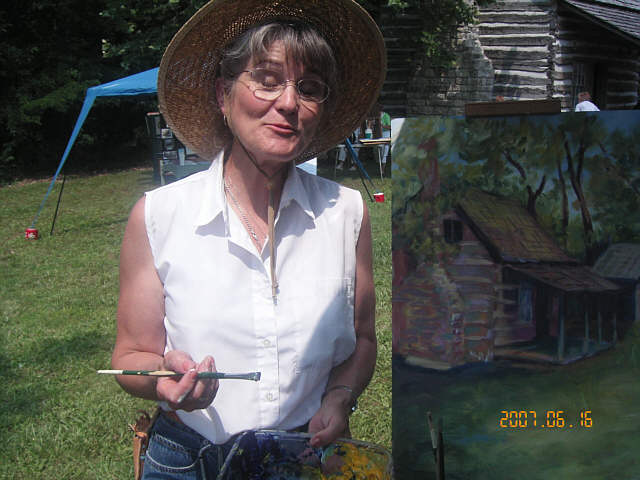 Mary Gainey
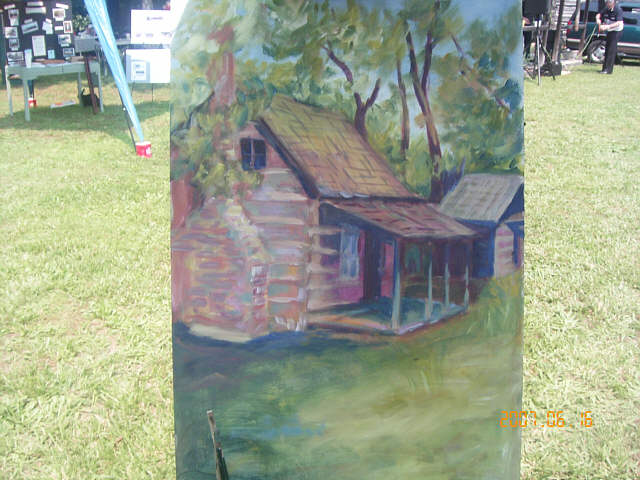 Lupardus Cabin
Another very popular exhibit on site at the museum Saturday was an old wagon (see photo 10) hand made by blacksmith John Kallenbach (see photo 11) before the turn of the last century. The old wagon has been restored by Brice Kallenbach who is the grandson of John (see photo 12 of Brice and son-in-law Brian Ahart). Brice says that John drove a team of horses pulling the wagon to the Olean Mill every week or so to have grain ground and sell produce as well as pick up and deliver goods for the neighbors.
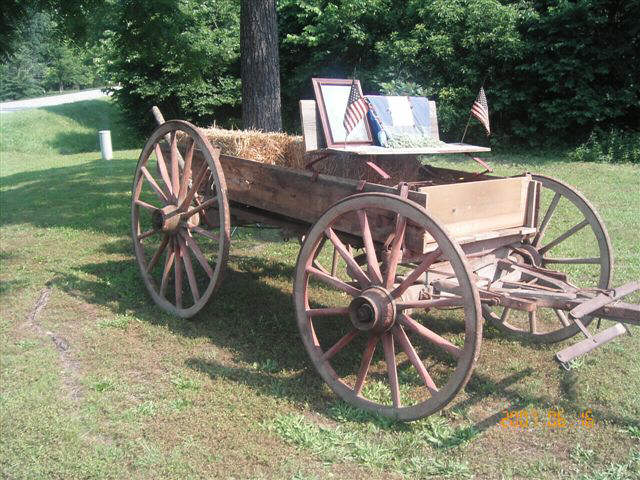 Kallenbach Wagon
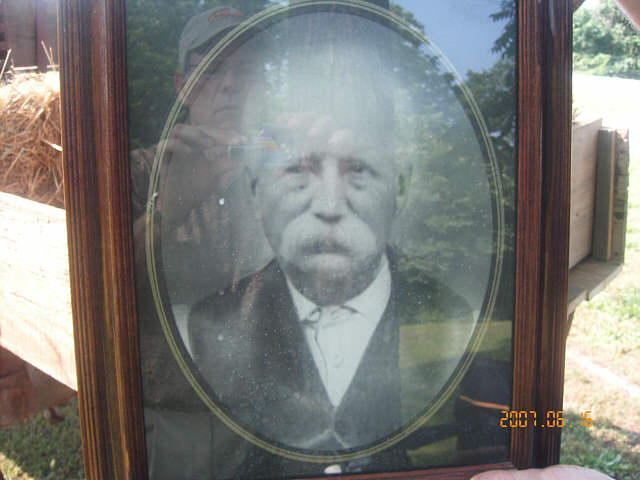 John Kallenbach
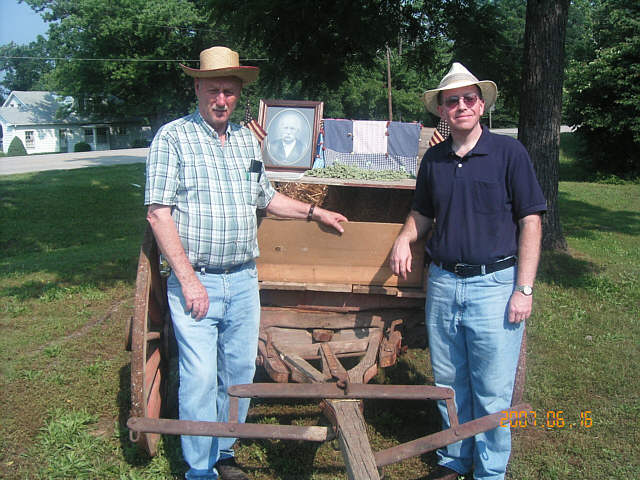 Brice Kallenbach & Brian Ahart Royal Kallenbach (see photo 13), an uncle of Brice, dropped by to chat. He is a ninety two year old retired carpenter who built many houses in Miller and Cole counties over the past seventy five or more years. He performed much carpentry work on the present museum building, the old Anchor Milling Company hardware store, to get it ready to be used as our museum. Royal was the grandson of Frederic Valentin Kallenbach who was the original German immigrant of the family to migrate into Miller County after the Civil War. Royal told me a story I hadn't heard before: he says that Dan Thompson, with whom he often worked, was the one who built the dome on the old courthouse (see photo 14). Apparently, the carpenter in charge of the project did not know how to construct a dome. So Dan was called in (he was only seventeen years old at the time). Although in those days carpenters only had a hammer, a fold up wooden measuring stick, and a cross cut saw, Dan was able to eye ball the job, cut out the pieces for the curves of the dome, and instruct the workers how to put it together. Dan also built the old jail house and the red brick high school (with the help of C.B. Wright, a cousin). And parenthetically, although up in years, Dan Thompson also built the house in which I was raised just up the hill from the present courthouse.
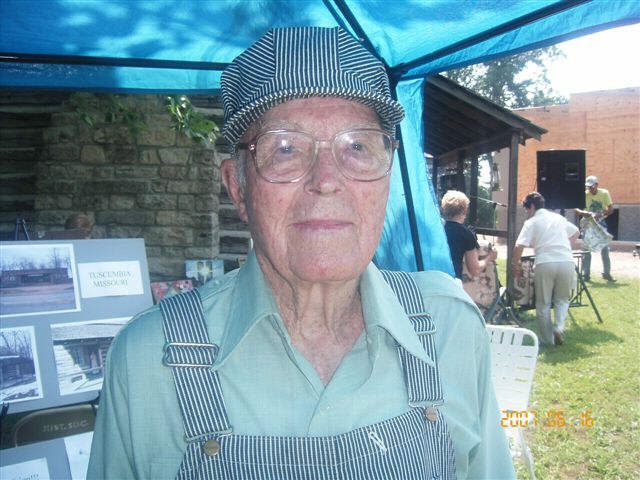 Royal Kallenbach
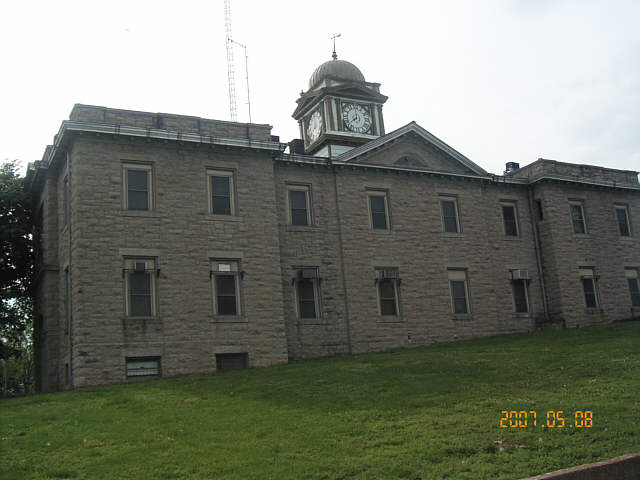 Old Courthouse I was delighted to meet Jennings McKee, and his wife, Prue (Abbot) (see photo 15). Jennings was basketball coach at Tuscumbia in the late forties. I was in grade school at the time so was not playing high school sports but remember Mr. McKee and hadn't seen him for more that fifty years.
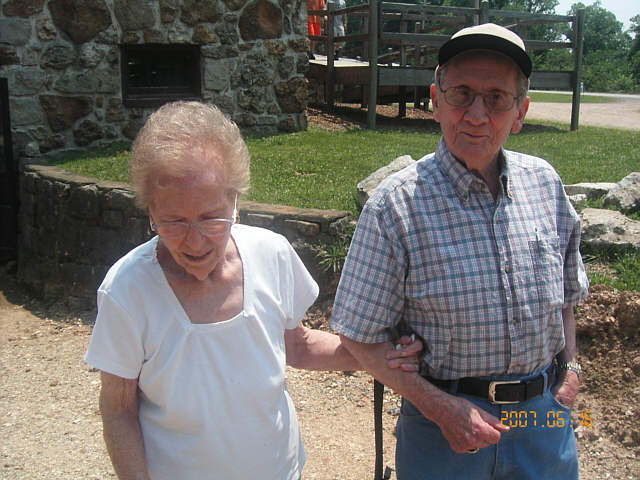 Prue Abbott & Jennings McKee Another wonderful conversation I enjoyed was with Sylvia Long (see photo 16) who, although ninety seven years old, was eager to come and share our ice cream. Sylvia is a retired school teacher having taught at several one room schools many years ago and after that at the School of the Osage. She was born near Brumley on her great grandfather's farm (george Ramsey). Sylvia attended the Iberia Academy, Linn Creek Teachers school, and Springfield Teachers College. She began teaching at Brumley in 1935 and taught there eight years before teaching at School of the Osage. After her teaching career Sylvia and her husband Ralph Long ran a general store in Brumley until 1972. She had great respect for C.D. Snodgrass who was the County Superintendent of Schools at the time. According to Sylvia, he worked harder for the poor country schools than anyone else in her memory. Sylvia gave me some old photos, one of which depicts the graduating county grade school class of 1929 (see photo 17). Mr. Snodgrass brought all the children attending the various one room schools throughout the county to the courthouse for a ceremony to receive their diplomas as a means of rewarding them and demonstrating the worthiness of their achievement.
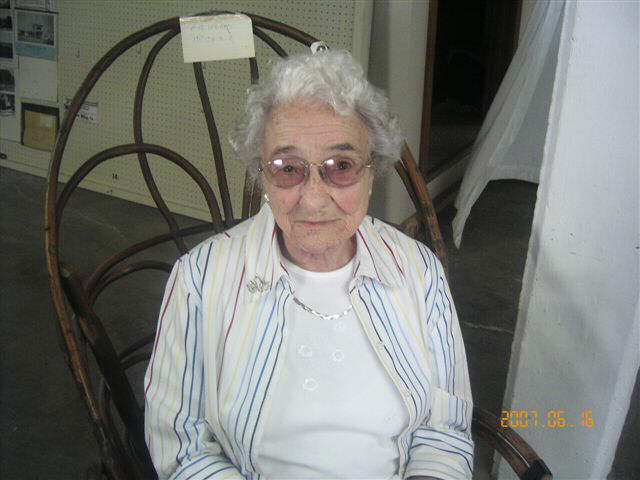 Sylvia Ramsey Long
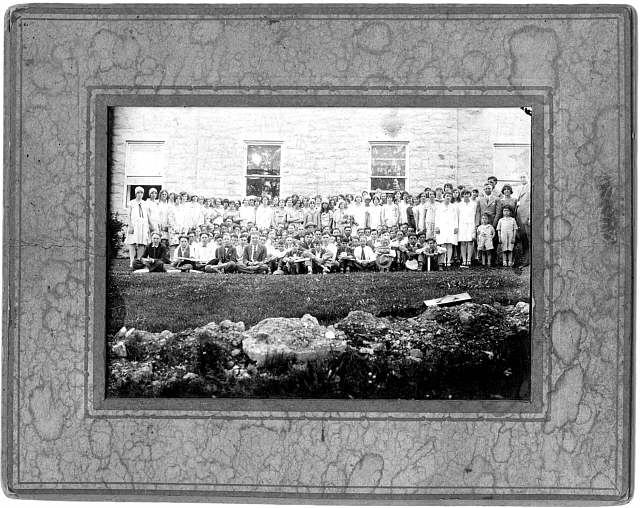 Eighth Grade Graduates 1929 Rural Schools Billy Sue Mayhan (see photo 18) dropped by and revealed the interesting fact that her grandfather, Albert Bittle, was the first "powder monkey" for the construction of Bagnell Dam. Now if you know what a powder monkey was you win this week's prize of a lead pencil with the Miller County Museum insignia. Ok, I'll go ahead and tell you: a powder monkey was the specialist who knew how to position and set off dynamite blasts to clear the rock off the bluffs and the river banks as well as for assisting the excavations for the columns to support the dam.
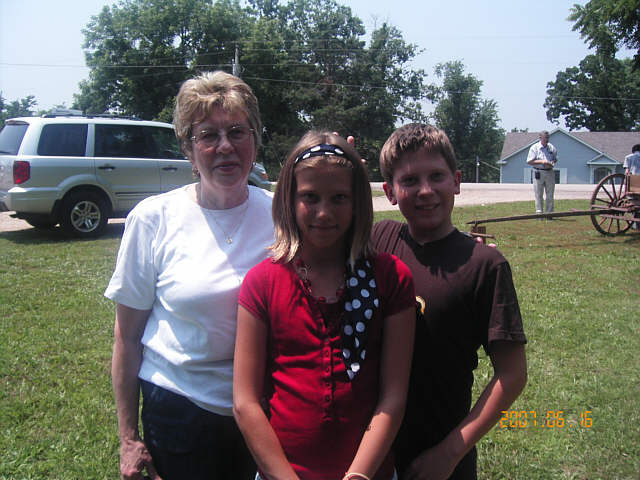 Billie Sue (Hays) Mayhan & Maynan Children Dr. and Mrs. Haggerty (photo visited us on the return trip from having dinner at the Red Oak Inn just south of the river, where a benefit was being hosted by Wes Horton, owner of the café for Sondra Bailey, whose husband passed away recently after a long bout with cancer involving two years of treatment. Dr. Haggerty gave us a lecture on the use of some of the old medical instruments on display in the medical display of the museum.
The William (Bill) Watkins family visited us and told us much about the old spinning wheel made by the great great grandfather of Bill many years ago and which is now on display in our museum and serves as the logo for all our literature about the museum.
For sure, the highlight of the day, in addition to the homemade ice cream made on site by Carl McDonald, was the country music performance by the Joe Jeffries group (see photo 18) . The music was old time and quite consistent with the theme of the the event and the museum setting. Instruments were mandolin, guitar, banjo, bass, and harmonica. The old time gospel songs were the favorites of many present.
We were delighted to host the primary summer grade school group of Tuscumbia Monday, June 18 at the museum. Doug Kempker, school principle and son-in-law of our plumber for the new construction, Dink Musick, delivered our guests early Monday morning (see photo 19). First on the agenda was a tour of the old cabins given by Sharon Holder (see photo 20) followed by craft projects including construction of a banner for school and a replica log cabin (see photos 21 and 22). A tour of the museum was given by Helen Schulte (photo 23). Also on the tour were Robin Jarrett, Stephanie McDowel, and teacher Beth Deffenbaugh (photo 24). Midway in the tour the students enjoyed an outdoor picnic lunch on the museum porch (photo 25).
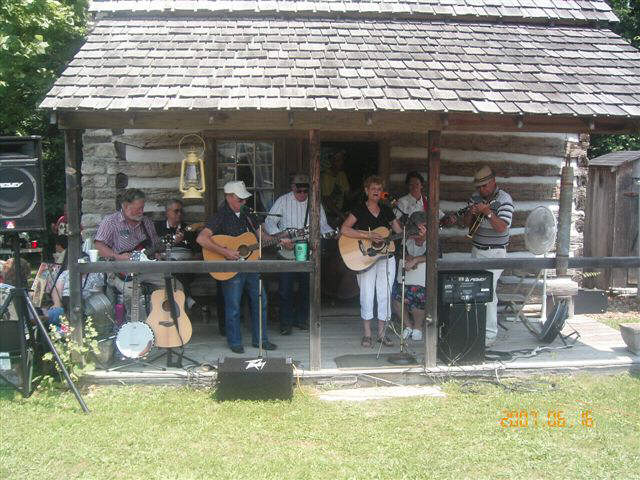 Joe Jeffries Group
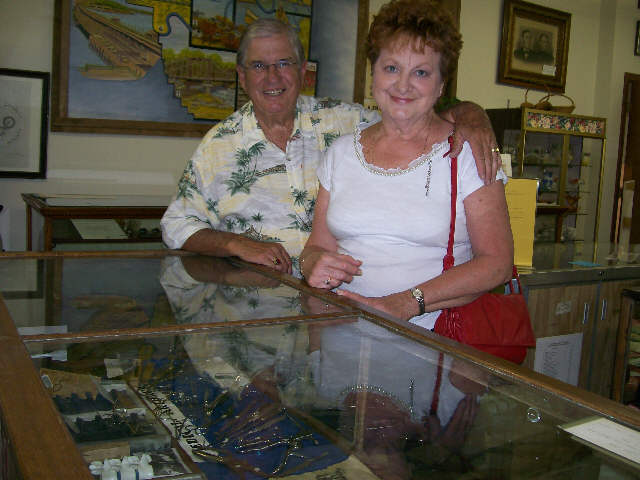 Dr. & Mrs. Haggerty at Museum
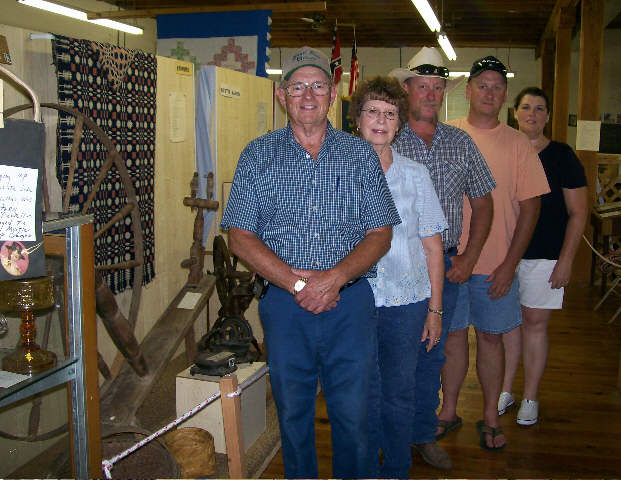 The Watkins Family
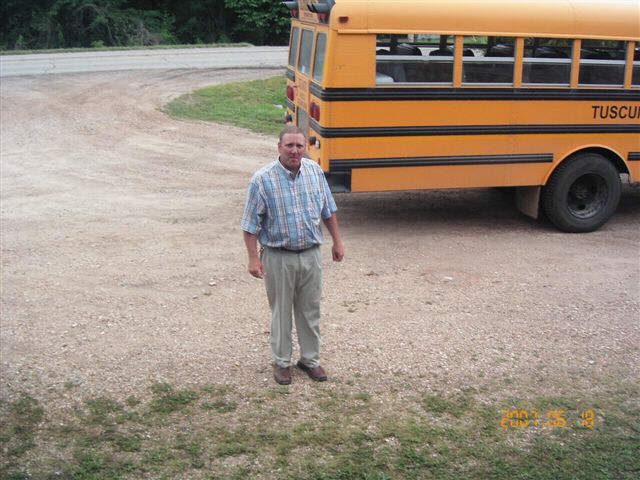 School Principle Doug Kempker
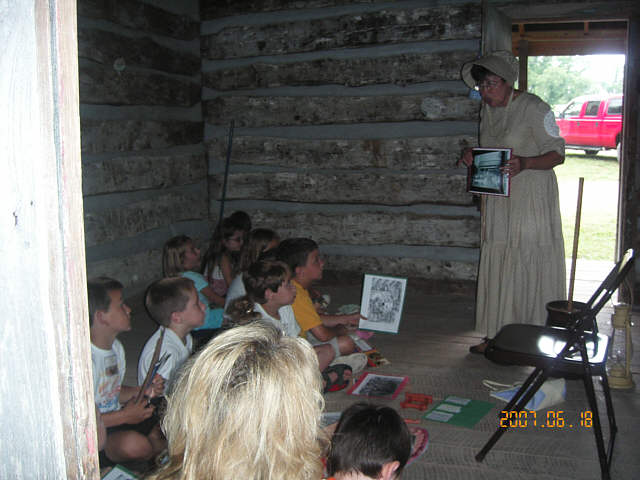 Tour Guide Sharon Holder
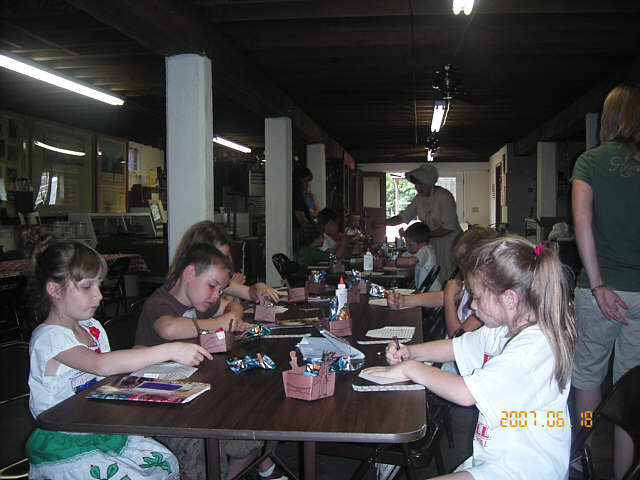 Making a Banner
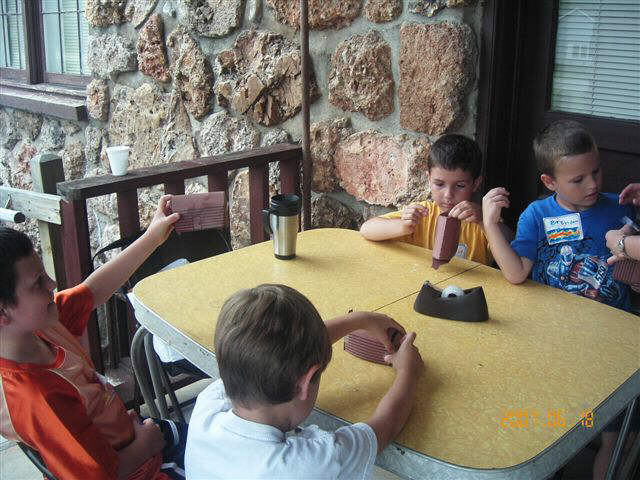 Making a Cabin
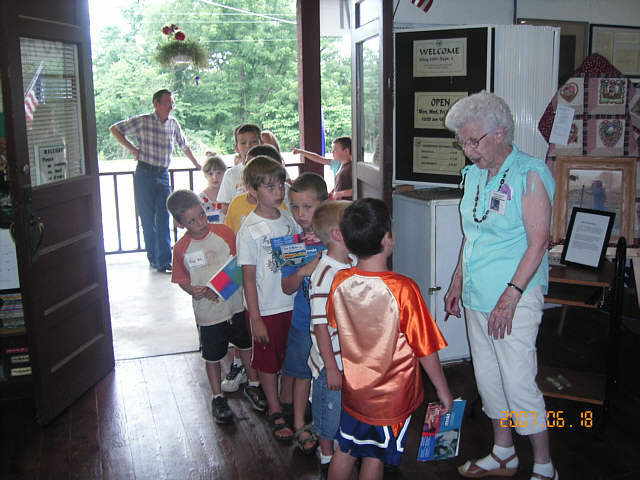 Tour Guide Helen Schulte
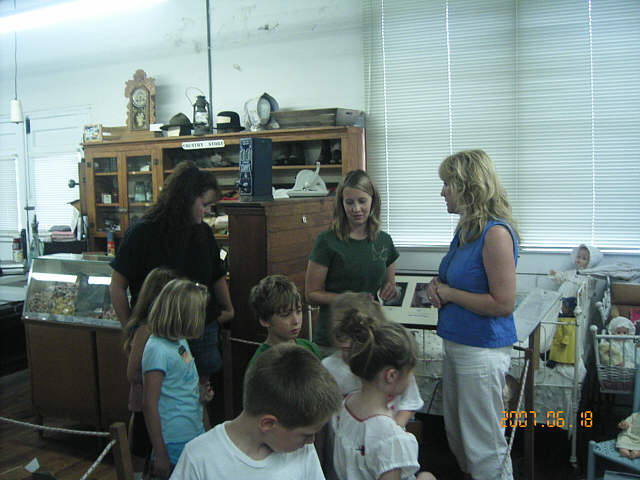 Robin Jarrett,Stephanie McDowell,and Beth Deffenbaugh
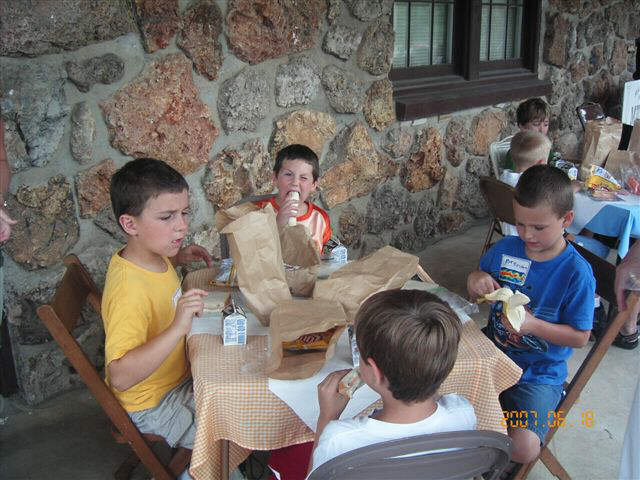 Eating Picnic Lunch Construction on the new museum addition has progressed in the last week. We now have the roof and siding completed by Paul Holder and his crew (photo 26), and the electrical work by Kenneth Wyrick is well underway.
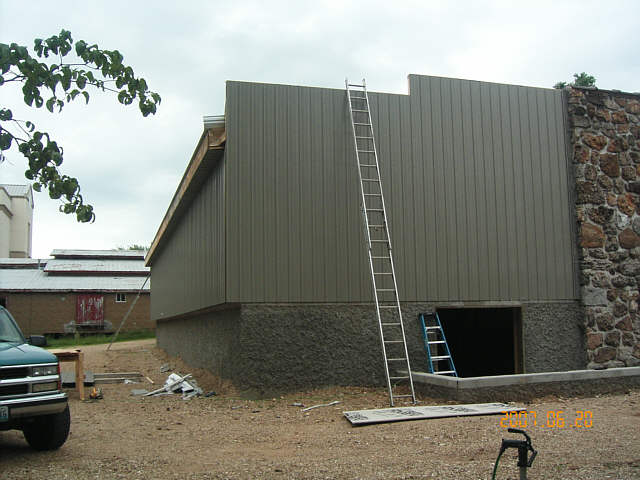 New Addition - 20 June Although many have visited our museum through the years which is housed in the old Anchor Milling Company Hardware Store
(photo 27), not much up to now has been written about the
building's history. It was completed in 1943, as part of a project
of the company to move all the buildings then located on the river
bank up to a location on the hill to escape the frequent floods,
especially one like that of 1943 which was the worst on
record. According to Bamber Wright, who was a member of the family which owned the Anchor Milling Company, the building was built by stone masons of the Charley McDowell group from near Kaiser. Royal Kallenbach, local carpenter now 92 years of age (referred to earlier in this narrative), reports that the McDowell family built many stone buildings in the Lake area as well as in the county during the early part of the last century. Royal said that the work harvesting the stones for building construction was very labor intensive because the only tools available were "bar, pick and shovel". The stones usually were found on hill tops, sometimes in what was called a "bald", an area so filled with rocks that less vegetation grew naturally. The stones were usually "soap", (a soft sandstone), flint, lime, or regular sandstone. They were hauled out by wagon and horse to be delivered to the building site; although by the time the museum building was built trucks were available to many builders. When you come to the museum next time, look closely at the façade and you will see on each end of the building embedded in the outer stone wall a circular formation of light colored stone, different in appearance that the rest of the building (photo 28). These smaller stones were taken from the James Lawrence Wright Mill on Little Saline creek which was working in the middle and late 1800's (photo 29). The idea to utilize the stones in the building is of uncertain origin; however, it could well have come from C.B. Wright, grandson of James L. Wright, or C.B.'s son, Homer Clay Wright. Bamber Wright, who is a great grandson of James L. Wright was a cousin of Homer C. Wright, reports that as he was serving overseas in the U.S. Army during WW 11 at the time of the building's construction, he most likely was not the originator of the historic and artistic idea to incorporate the mill stones in the façade of the building. As a child I was in and around the building much of my early life. I never had the curiosity to inquire about the stones in the façade thinking they were a design curiosity, but I never suspected they had some historic and sentimental value for those who remembered the old mill on Saline Creek.
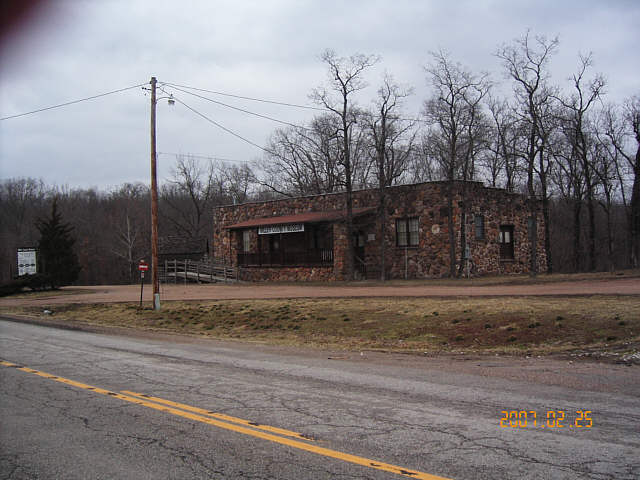 Old Hardware Store
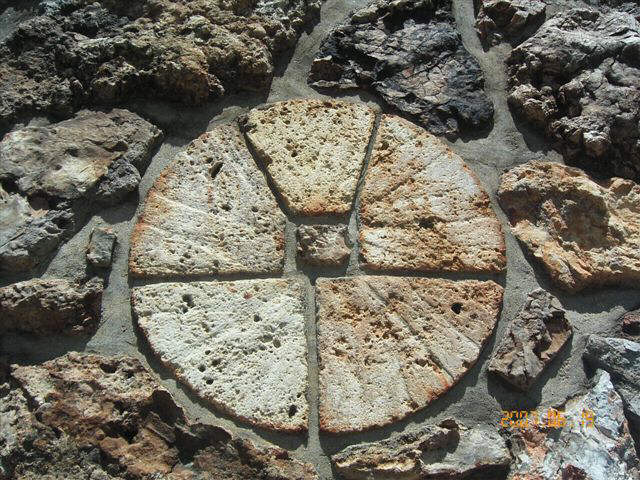 Old Mill Stone
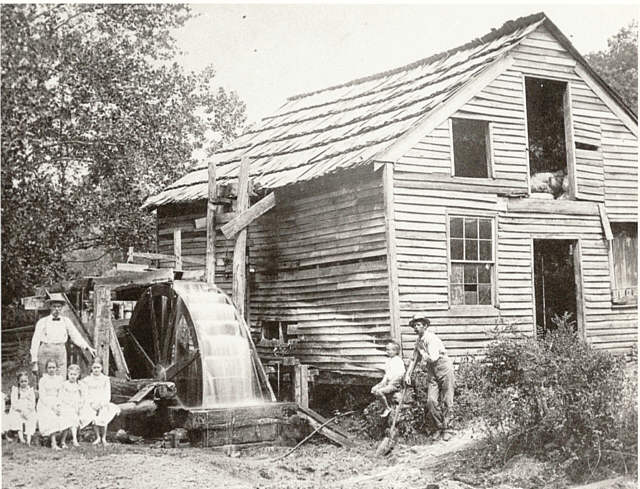 G. L. Wright Carding Machine on Saline Creek Our next event at the museum is the Quarterly Member's Meeting to which all are invited. The program for this occasion will be given by Frank Schlesinger, who is a very talented local gospel singer. Frank has a stage presence that is unique which never fails to entertain and at times amuse his audience. You will be very rewarded if you come to enjoy his performance. The event is a no charge pot luck dinner for all who want to come, especially non members who, we hope, will want to join our Society dedicated to the preservation of the history of our forebearers and their culture. If you would like to support our building program you can send donations to:
Miller County Building Fund
P.O. Box 57
Tuscumbia, Mo. 65082
See you next week.
|



